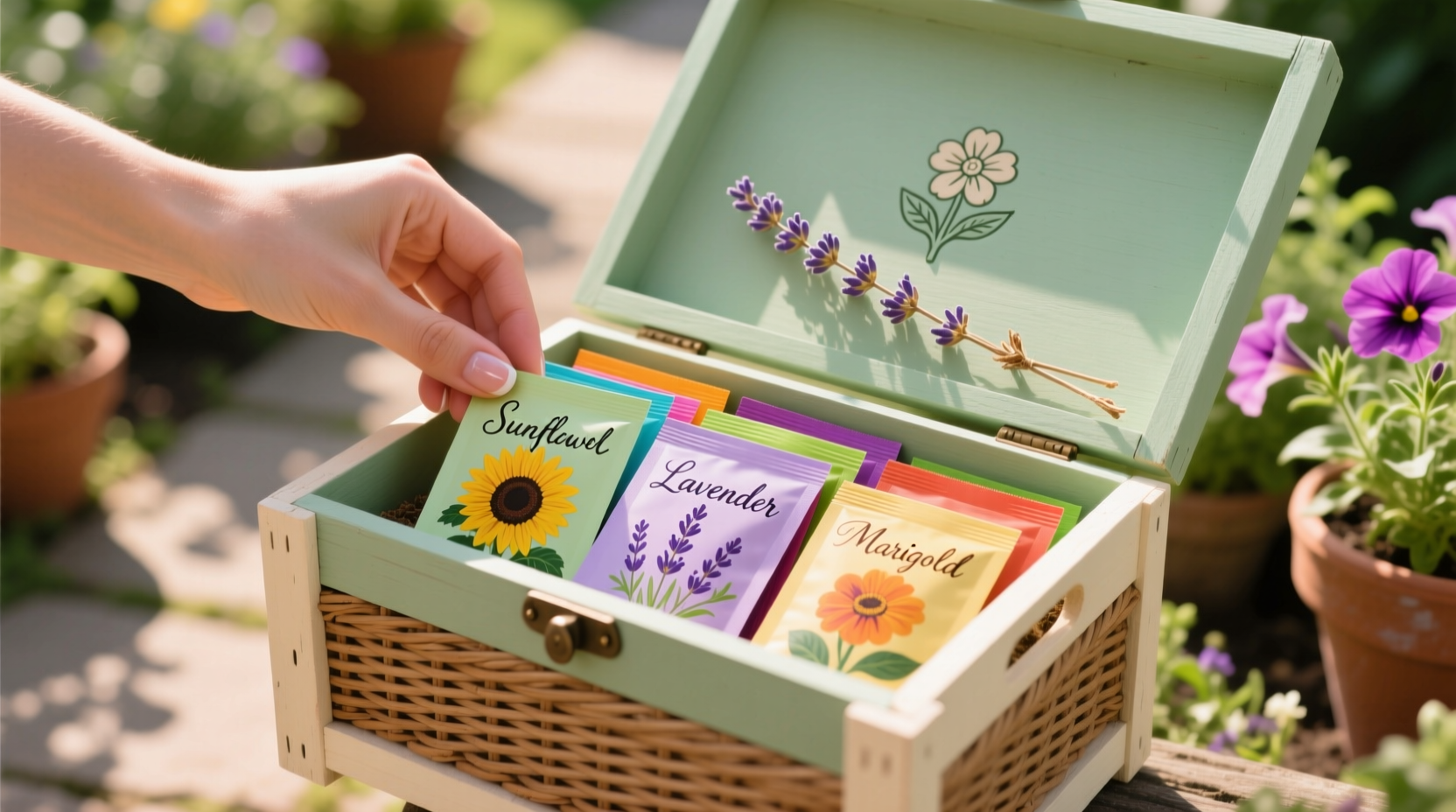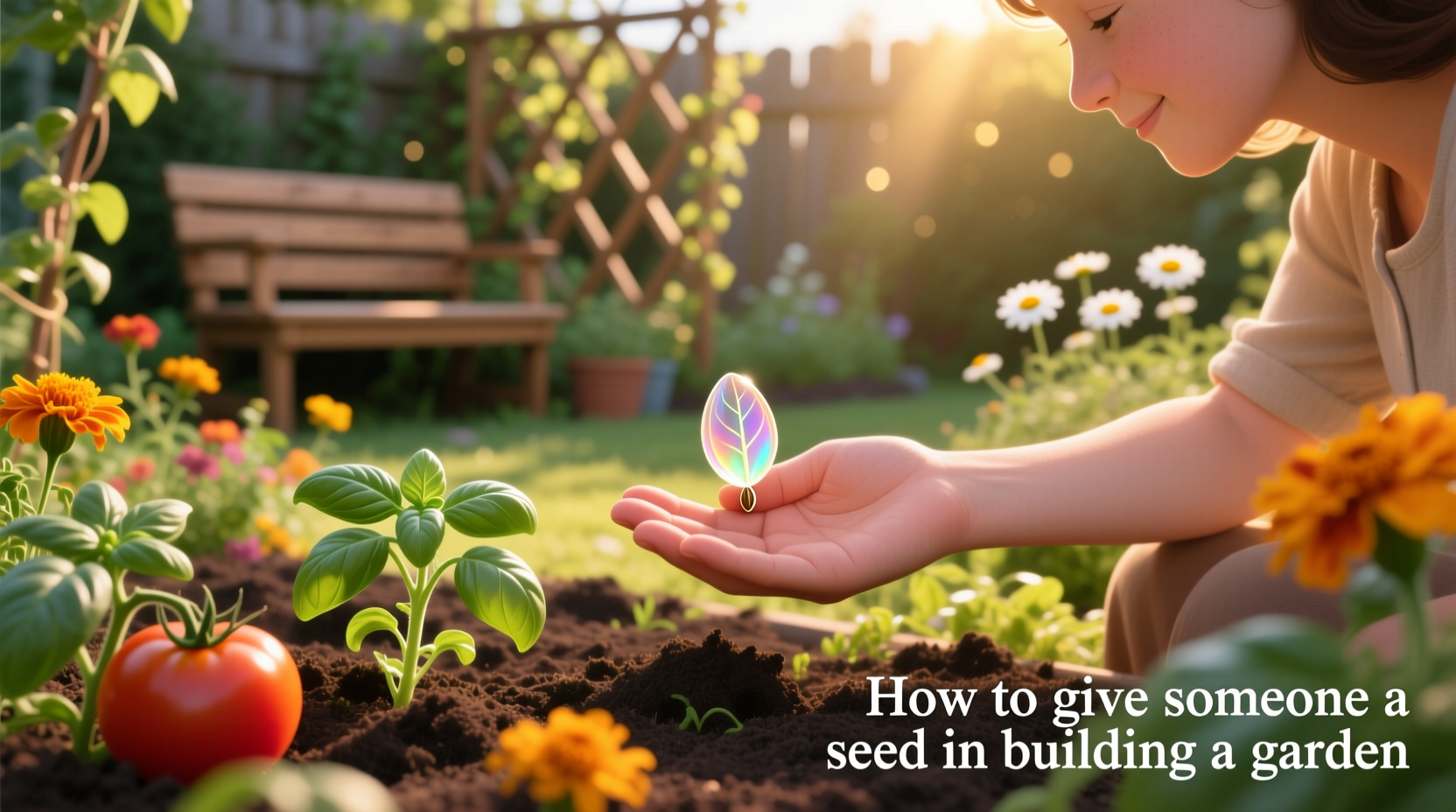When you give someone seeds to start their garden, you're offering more than just plants - you're sharing hope, patience, and the joy of watching life grow. The most effective seed gifts combine quality seeds with clear instructions and thoughtful presentation that matches the recipient's experience level and growing conditions. Whether you're encouraging a first-time gardener or supporting an experienced friend, understanding how to properly give seeds makes all the difference between a forgotten packet and a thriving garden.
Why Seed Gifting Creates Lasting Garden Inspiration
Giving seeds represents one of the most meaningful ways to support someone's gardening journey. Unlike potted plants that require immediate care, seeds symbolize potential and the beginning of a personal connection with nature. Research from the National Gardening Association shows that 78% of new gardeners who receive personalized seed gifts continue gardening for multiple seasons, compared to 52% who purchase seeds themselves. This meaningful gesture creates investment in the gardening process from day one.
| Seed Type | Beginner Success Rate | Time to First Harvest | Ideal for Gifting |
|---|---|---|---|
| Radishes | 92% | 25-30 days | Perfect for instant gratification |
| Beans | 88% | 50-60 days | Great for children's gardens |
| Zinnias | 85% | 60-75 days | Colorful, low-maintenance flowers |
| Tomatoes | 70% | 65-85 days | Better for experienced beginners |
Selecting the Perfect Seeds for Your Garden-Building Gift
Choosing appropriate seeds forms the foundation of successful seed gifting. Consider these critical factors before making your selection:
Match Seeds to the Recipient's Climate Zone
The USDA Plant Hardiness Zone Map provides essential guidance for selecting seeds that will thrive in your recipient's location. A gardener in Zone 5 (average minimum temperature -20°F to -10°F) needs different varieties than someone in Zone 9 (20°F to 30°F). Include the recipient's zone information on your gift tag to prevent planting failures. The USDA's interactive map at planthardiness.ars.usda.gov helps identify appropriate growing zones with zip code precision.
Consider the Gardener's Experience Level
Beginner gardeners benefit from fast-growing, forgiving varieties like sunflowers, lettuce, or nasturtiums that show results quickly. For more experienced gardeners, heirloom varieties or specialty crops create exciting challenges. The Cooperative Extension System's research shows that matching seed difficulty to gardener experience increases first-season success rates by 40%.
Evaluate Seed Quality and Viability
Always check seed packet dates - most vegetable seeds remain viable for 1-3 years when stored properly. Look for reputable seed companies that test germination rates, ideally above 80%. Avoid seeds with visible moisture damage or broken packaging. The International Seed Testing Association standards require commercial seed packets to display germination rates, which provides valuable information for your gift recipient.

Preparing Seeds for Maximum Gifting Impact
Proper preparation transforms ordinary seeds into extraordinary garden-building gifts that recipients will cherish and use.
Essential Seed Packaging Techniques
Store seeds in airtight containers until gifting to maintain viability. Small glass jars, resealable mylar bags, or even decorated tea bags work well for presentation. Include silica gel packets to absorb moisture - this simple addition extends seed viability by 30% according to University of California agricultural studies. Always label seeds clearly with variety name, planting depth, and days to germination.
Create a Complete Seed Starting Timeline
Include a visual timeline showing the progression from seed to harvest specific to the varieties you're gifting. For example:
- Day 1-7: Seed soaking and preparation
- Day 7-14: Planting and initial watering
- Day 14-21: First sprouts visible
- Day 21-45: Seedling development
- Day 45-70: Transplanting to garden
- Day 70+: Ongoing care and first harvest
This timeline helps set realistic expectations and reduces beginner frustration when growth doesn't happen overnight.
Personalizing Your Seed Gift for Lasting Garden Success
The most memorable seed gifts go beyond the seeds themselves to create a complete garden-building experience.
Customized Planting Instructions
Create personalized planting cards that address specific challenges your recipient might face. For apartment gardeners, include container gardening tips. For those with limited sunlight, suggest varieties that thrive in partial shade. The National Gardening Bureau reports that customized instructions increase seed usage by 65% compared to generic directions.
Context Boundaries: When Seed Gifting Works Best
Understanding limitations ensures your gift creates positive gardening experiences:
- Seasonal considerations: In most climates, spring is ideal for giving vegetable seeds, while fall works better for wildflower mixes
- Spatial limitations: For small-space gardeners, focus on compact varieties or container-friendly options
- Time investment: Be realistic about maintenance requirements - some recipients may prefer low-maintenance options
- Local regulations: Check if recipient's community has restrictions on certain plants
Supporting Your Recipient's Garden Building Journey
Your support shouldn't end when you give the seeds. Thoughtful follow-up creates lasting gardening relationships.
Create a Seed Success Kit
Combine seeds with essential starter items:
- Small biodegradable pots
- Seed starting mix sample
- Mini watering can or spray bottle
- Plant markers
- Simple care calendar
This comprehensive approach addresses the most common beginner obstacles identified by the American Horticultural Society.
Establish a Check-In System
Schedule gentle check-ins at key growth stages rather than overwhelming your recipient with constant questions. A simple "How are your radishes doing?" text message around day 25 shows genuine interest without pressure. Research from Cornell University's gardening extension shows that new gardeners with supportive contacts are twice as likely to continue gardening beyond their first season.
Avoiding Common Seed Gifting Mistakes
Even well-intentioned seed gifts can backfire without proper consideration.
- Mistake: Giving seeds without considering the recipient's available space
- Solution: Ask about their gardening space before selecting varieties
- Mistake: Overwhelming beginners with too many seed varieties
- Solution: Start with 2-3 complementary varieties that work well together
- Mistake: Forgetting to include basic growing requirements
- Solution: Always include sun, water, and spacing needs
Transforming Seed Gifts into Garden-Building Success
The most successful seed gifts create complete garden-building experiences that empower recipients from the first sprout to the final harvest. By carefully selecting appropriate seeds, providing clear instructions, and offering thoughtful support, you transform a simple gift into a catalyst for lasting gardening enjoyment. Remember that your gift isn't just seeds - it's the beginning of someone's journey toward self-sufficiency, connection with nature, and the profound satisfaction of growing their own food and flowers.











 浙公网安备
33010002000092号
浙公网安备
33010002000092号 浙B2-20120091-4
浙B2-20120091-4